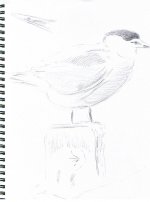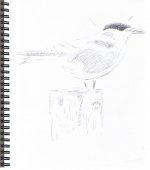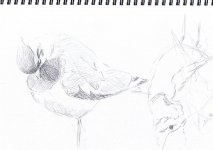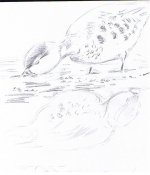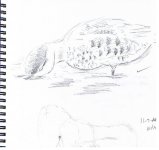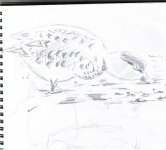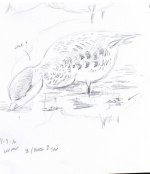Woody
Well-known member
Little owls are (pretty obviously) one of my faves so it's a treat to see these especially the one eyed guy, just as you saw it. It's interesting that you've drawn the second one using the negative space to define the outline. This is something that I find I'm doing with the 15 min flash pics, not drawing outlines but leaving a space for the features to drop into.
The preening med gull is a beauty too, I can envisage that in colour...
Mike
The preening med gull is a beauty too, I can envisage that in colour...
Mike




